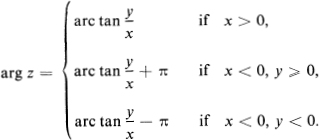Richard A. Silverman - Introductory Complex Analysis
Here you can read online Richard A. Silverman - Introductory Complex Analysis full text of the book (entire story) in english for free. Download pdf and epub, get meaning, cover and reviews about this ebook. year: 1984, publisher: Dover Publications, genre: Science. Description of the work, (preface) as well as reviews are available. Best literature library LitArk.com created for fans of good reading and offers a wide selection of genres:
Romance novel
Science fiction
Adventure
Detective
Science
History
Home and family
Prose
Art
Politics
Computer
Non-fiction
Religion
Business
Children
Humor
Choose a favorite category and find really read worthwhile books. Enjoy immersion in the world of imagination, feel the emotions of the characters or learn something new for yourself, make an fascinating discovery.
- Book:Introductory Complex Analysis
- Author:
- Publisher:Dover Publications
- Genre:
- Year:1984
- Rating:4 / 5
- Favourites:Add to favourites
- Your mark:
Introductory Complex Analysis: summary, description and annotation
We offer to read an annotation, description, summary or preface (depends on what the author of the book "Introductory Complex Analysis" wrote himself). If you haven't found the necessary information about the book — write in the comments, we will try to find it.
Introductory Complex Analysis is a scaled-down version of A. I. Markushevichs masterly three-volume Theory of Functions of a Complex Variable. Dr. Richard Silverman, the editor and translator of the original, has prepared this shorter version expressly to meet the needs of a one-year graduate or undergraduate course in complex analysis. In his selection and adaptation of the more elementary topics from the original larger work, he was guided by a brief course prepared by Markushevich himself.
The book begins with fundamentals, with a definition of complex numbers, their geometric representation, their algebra, powers and roots of complex numbers, set theory as applied to complex analysis, and complex functions and sequences. The notions of proper and improper complex numbers and of infinity are fully and clearly explained, as is stereographic projection. Individual chapters then cover limits and continuity, differentiation of analytic functions, polynomials and rational functions, Mobius transformations with their circle-preserving property, exponentials and logarithms, complex integrals and the Cauchy theorem , complex series and uniform convergence, power series, Laurent series and singular points, the residue theorem and its implications, harmonic functions (a subject too often slighted in first courses in complex analysis), partial fraction expansions, conformal mapping, and analytic continuation.
Elementary functions are given a more detailed treatment than is usual for a book at this level. Also, there is an extended discussion of the Schwarz-Christolfel transformation, which is particularly important for applications.
There is a great abundance of worked-out examples, and over three hundred problems (some with hints and answers), making this an excellent textbook for classroom use as well as for independent study. A noteworthy feature is the fact that the parentage of this volume makes it possible for the student to pursue various advanced topics in more detail in the three-volume original, without the problem of having to adjust to a new terminology and notation .
In this way, IntroductoryComplex Analysis serves as an introduction not only to the whole field of complex analysis, but also to the magnum opus of an important contemporary Russian mathematician.
Richard A. Silverman: author's other books
Who wrote Introductory Complex Analysis? Find out the surname, the name of the author of the book and a list of all author's works by series.

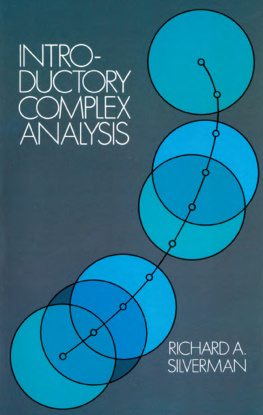
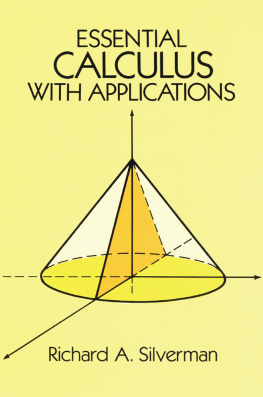
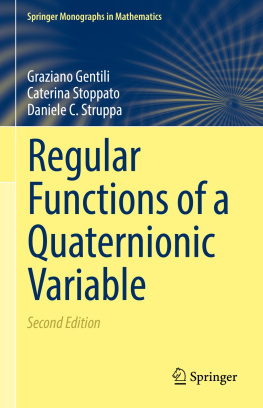

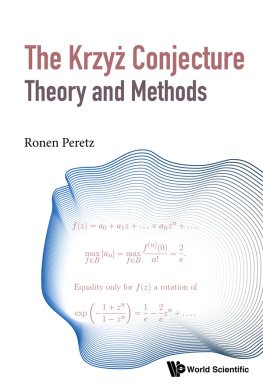
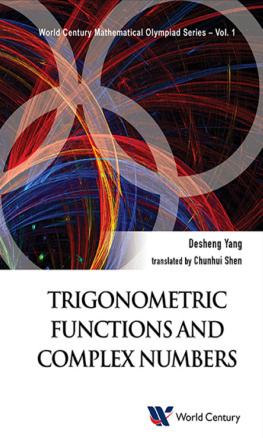
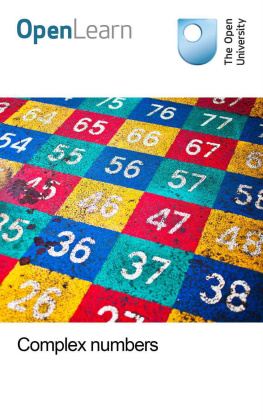
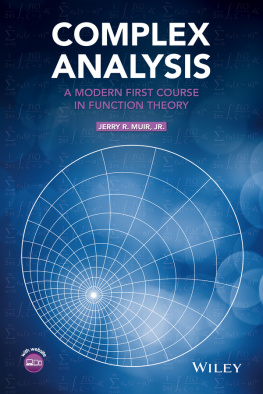

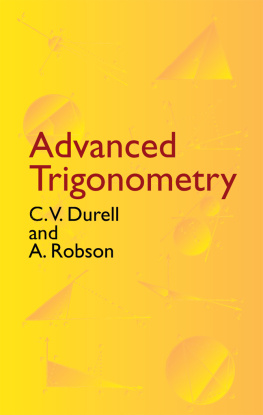
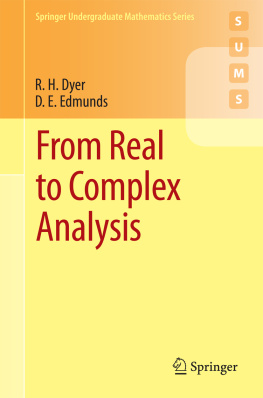
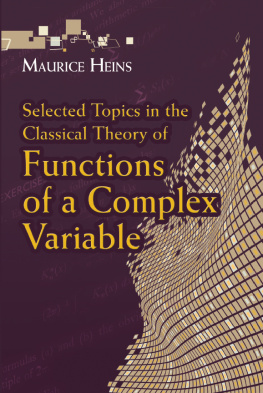
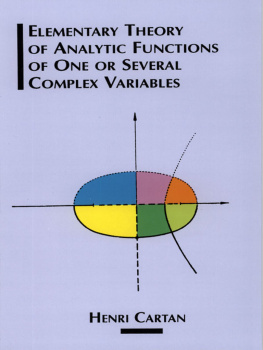
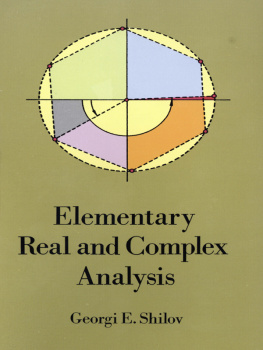
 has no real solutions (roots).
has no real solutions (roots). of degree n, where a0, a1,, an are arbitrary real numbers. As already shown by () is in a certain sense the simplest algebraic equation with no real roots, an obvious first approach to our problem is to introduce an imaginary unit
of degree n, where a0, a1,, an are arbitrary real numbers. As already shown by () is in a certain sense the simplest algebraic equation with no real roots, an obvious first approach to our problem is to introduce an imaginary unit  , and then consider complex numbers of the form
, and then consider complex numbers of the form  ) are treated exactly like binomials a + bx in an unknown x, except that the rule
) are treated exactly like binomials a + bx in an unknown x, except that the rule  is used to eliminate all powers of i higher than the first. If this is done, the roots of () include the real numbers as a special case (an essential feature). Surprisingly enough, as we shall see later ( always has a root, even if the coefficients a0, a1,, an are themselves complex numbers, a result known as the fundamental theorem of algebra. 2. COMPLEX NUMBERS AND THEIR GEOMETRIC REPRESENTATION As already noted, by a complex number we mean an expression of the form a + ib, where a and b are real numbers and i is the imaginary unit.
is used to eliminate all powers of i higher than the first. If this is done, the roots of () include the real numbers as a special case (an essential feature). Surprisingly enough, as we shall see later ( always has a root, even if the coefficients a0, a1,, an are themselves complex numbers, a result known as the fundamental theorem of algebra. 2. COMPLEX NUMBERS AND THEIR GEOMETRIC REPRESENTATION As already noted, by a complex number we mean an expression of the form a + ib, where a and b are real numbers and i is the imaginary unit. If Im c = 0, c = a + ib reduces to a real number, while if Im c 0, c is said to be imaginary and if Re c = 0, Im c 0, c is said to be purely imaginary. Complex numbers can be represented geometrically as points in the plane, a fact which is not only useful but virtually indispensable. Introducing a rectangular coordinate system in the plane, we can identify the complex number z = x + iy with the point P = (x, y), as shown in represent the complex numbers is called the complex plane, or the z-plane, w-plane,, depending on the letter z, w,used to denote a generic complex number. With the understanding that such a complex plane has been constructed, the terms complex number x + iy and point x + iy will be used interchangeably.
If Im c = 0, c = a + ib reduces to a real number, while if Im c 0, c is said to be imaginary and if Re c = 0, Im c 0, c is said to be purely imaginary. Complex numbers can be represented geometrically as points in the plane, a fact which is not only useful but virtually indispensable. Introducing a rectangular coordinate system in the plane, we can identify the complex number z = x + iy with the point P = (x, y), as shown in represent the complex numbers is called the complex plane, or the z-plane, w-plane,, depending on the letter z, w,used to denote a generic complex number. With the understanding that such a complex plane has been constructed, the terms complex number x + iy and point x + iy will be used interchangeably. joining the origin O of the complex plane to the point P = (x, y), instead of using the point P itself (see In other words, |z| and Arg z are the polar coordinates r and of the point with rectangular coordinates x and y, i.e.,
joining the origin O of the complex plane to the point P = (x, y), instead of using the point P itself (see In other words, |z| and Arg z are the polar coordinates r and of the point with rectangular coordinates x and y, i.e., 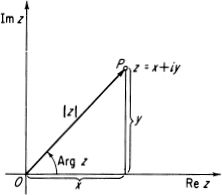 FIGURE 1.1
FIGURE 1.1  It follows at once that
It follows at once that  where () is called the trigonometric form of the complex number z. Clearly, the quantity Arg z is defined only to within an integral multiple of 2. However, there is one and only one value of Arg z, say , which satisfies the inequality
where () is called the trigonometric form of the complex number z. Clearly, the quantity Arg z is defined only to within an integral multiple of 2. However, there is one and only one value of Arg z, say , which satisfies the inequality  and we shall call the principal value of the argument z, written arg z. The relation between Arg z and arg z is given by
and we shall call the principal value of the argument z, written arg z. The relation between Arg z and arg z is given by  where n ranges over all the integers 0, 1, 2,. It is an immediate consequence of
where n ranges over all the integers 0, 1, 2,. It is an immediate consequence of  and
and  Some care is required in inverting (), since the arc tangent of a real number x, written Arc tan x, is only defined to within an integral multiple of . However, there is one and only one value of Arc tan x, say , which satisfies the inequality
Some care is required in inverting (), since the arc tangent of a real number x, written Arc tan x, is only defined to within an integral multiple of . However, there is one and only one value of Arc tan x, say , which satisfies the inequality  and we shall call the principal value of the arc tangent of x, written arc tan x.
and we shall call the principal value of the arc tangent of x, written arc tan x.